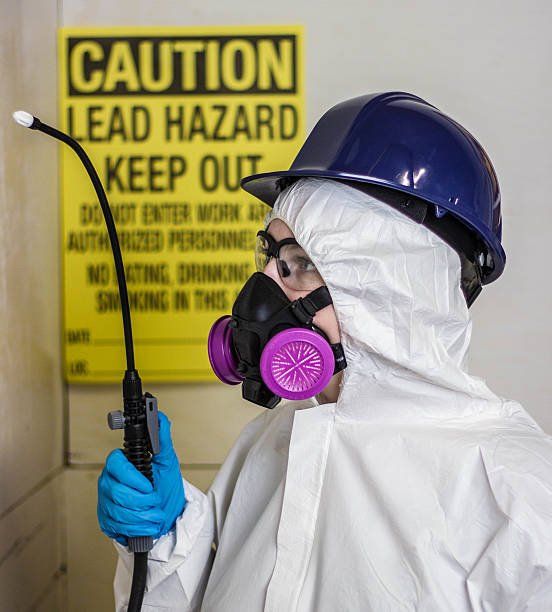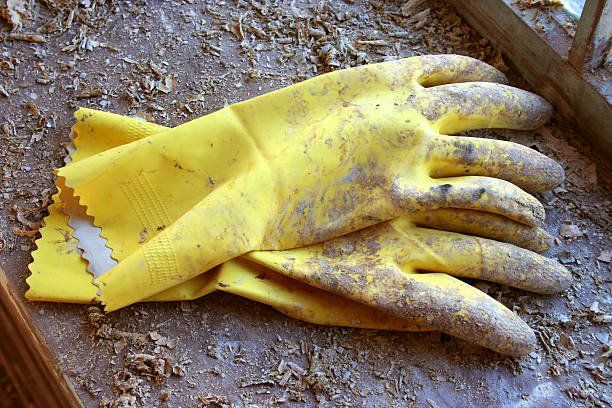How to Safely Remove Lead Paint from Your Home
Lead paint is a serious issue. If it is not removed properly, it can cause health problems for you and your family. In this blog post, we will discuss how to safely get rid of lead paint from your home. We will go over the steps that you need to take, as well as the supplies that you will need. We highly recommend that you hire a professional to remove lead paint from your home. However, if you decide to do it yourself, we will provide you with all of the information that you need!
What is lead paint?

Lead paint is a type of paint that contains high levels of lead. Lead based paint is a toxic metal that can cause serious health problems, especially in young children. When lead paint chips or peels, it can release lead dust into the air, which can be inhaled or swallowed. Lead can also contaminate food and water that come into contact with it.
How do you know if your home has lead paint and what are the risks of it?
Lead paint was commonly used in homes up until the 1970s. If your home was built before 1978, it is likely that there is lead paint present. The risks of lead paint are serious and they have high-efficiency particulate air and can include neurological damage, impaired development, and even death in young children. If you are not sure if your home has lead paint, you can have it tested. There are also a number of signs that can indicate that lead paint is present in your home, including: peeling paint or dust and paint chips, faded paint, soil that is discolored near the house, and windowsills that are flaking or dusting. If you have any of these symptoms, it is important to have your home tested for lead and to take steps to remove the paint if it is found to contain lead.
What are some precautions you can take to avoid lead poisoning?
Some precautions you can take to avoid this hazard include:
• Wearing a respirator to protect your lungs from lead particles
• Wearing gloves and other protective clothing to keep the lead from coming into contact with your skin
• Making sure that the work area is well-ventilated to help prevent inhalation of the lead particles
Methods to Safely Remove Lead Paint from Your Home
The most popular method for removing lead paint is to use a chemical stripper. This is a substance that dissolves the paint so it can be washed away. However, chemical strippers can be dangerous and should only be used by professionals.
Another option is to use a heat gun. This will loosen the paint so it can be scraped off. However, it is important to be careful when using a heat gun, as it can also damage the underlying surfaces.
A third option is to use a sandblaster. This will blast the paint away without damaging the underlying surfaces. However, it is also important to be careful when using a wet sand blaster, as it can cause injuries if not used properly.
Finally, if you are not comfortable using any of these methods, you can always hire a professional to do the job for you.
How much does it cost to have lead paint removed from a home, and how long will it take
In the United States, it can cost between $3,000 and $8,000 to have lead paint removed from a home. The amount of time it will take to remove the paint depends on the size of the home and the number of layers of paint that need to be removed. Typically, it will take between two and four days to remove lead paint from a home.
If you choose to remove the paint yourself, what are some of the tools and materials you will need
If you are thinking about removing lead paint yourself, it is important to be aware of the hazards involved and take appropriate precautions. You will need some specialized tools and materials, including:
- Protective clothing, including a respirator
- Lead paint removal solvent
- Stiff bristled brush
- Dust mask
- Rubber gloves
- Rag

How to choose the company to remove lead paint
When it comes to removing lead paint, it is important to select a company that is qualified and experienced in the process. The EPA recommends hiring a Lead-Safe Certified contractor to conduct the work.
To find a contractor that meets these qualifications, the EPA has created a searchable database on its website. The database includes contractors who have been certified by one of EPA's approved certification programs.
When selecting a contractor, be sure to ask for references and check them thoroughly. Also, be sure to get quotes from multiple contractors and compare prices.
What to expect from the company of removing lead paint from your home
When it comes to lead paint removal, many homeowners are unsure of what to expect. The process can be daunting, but it is important to remember that professional lead paint removal companies have the experience and tools necessary to get the job done quickly and safely.
Homeowners can expect a variety of services from a professional lead paint removal company, including:
- Assessment of the home for lead paint
- Removal of all lead paint from the home
- Cleaning and decontamination of the home
- Restoration of any damage caused by the removal process
It is important to note that not all homes contain lead paint. If your home was built after 1978, it is unlikely that there is any lead paint present. However, if you are unsure or have any concerns, it is best to consult with a professional lead paint removal company.
FAQs
Is it safe to remove lead paint yourself?
It is generally safe to remove lead paint yourself, but be sure to use the appropriate safety precautions and equipment.
What should I do if I encounter lead paint while renovating my home?
If you encounter lead paint while renovating your home, you should take appropriate safety precautions and contact a professional for assistance.
Can I use a paint stripper to remove lead paint?
No, you should not use a paint stripper to remove lead paint.
You might also like

Book A Service Today


